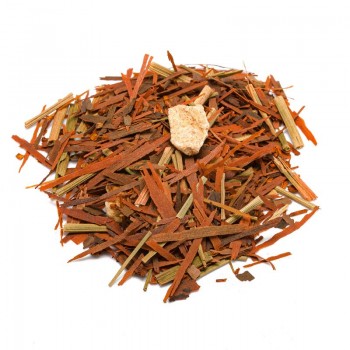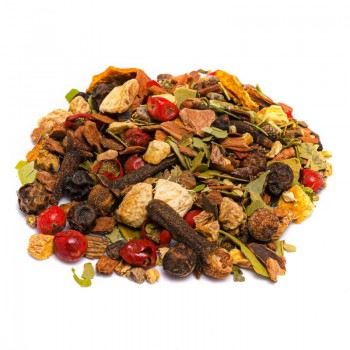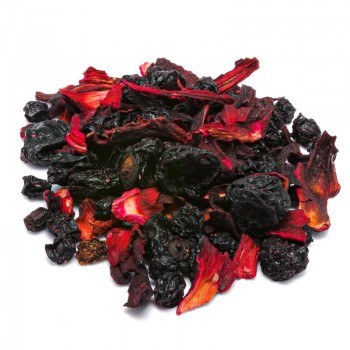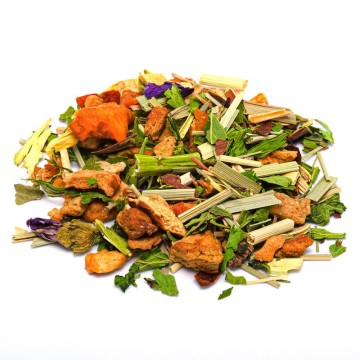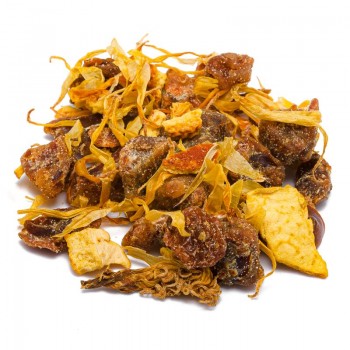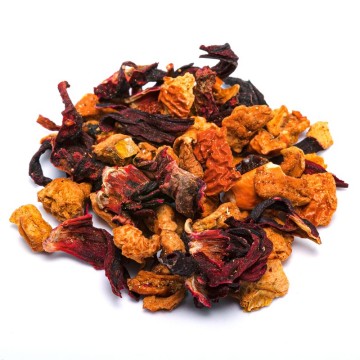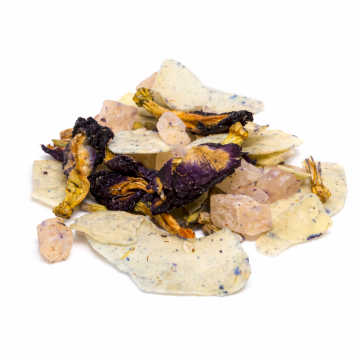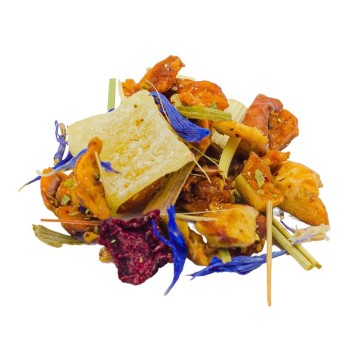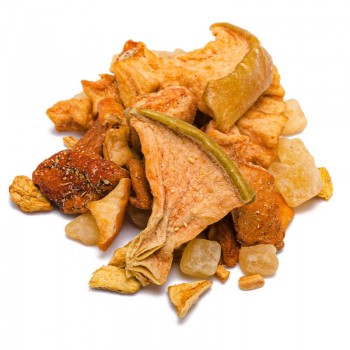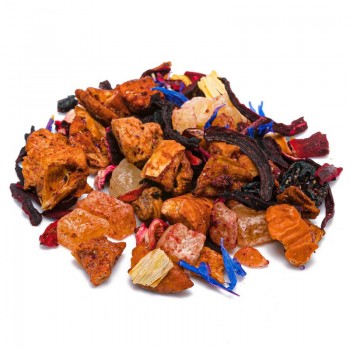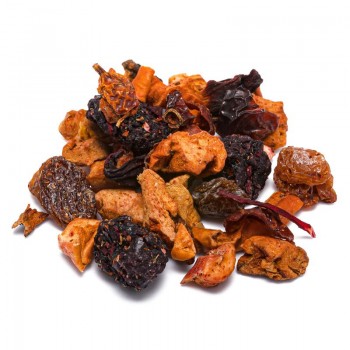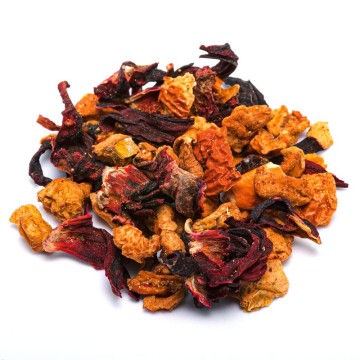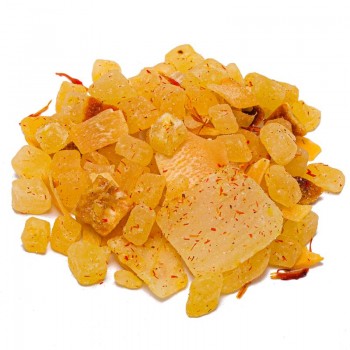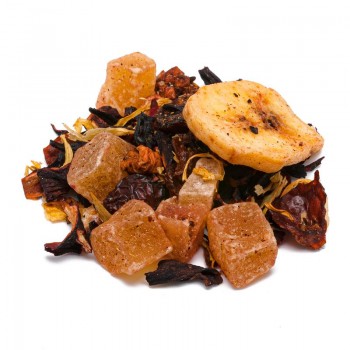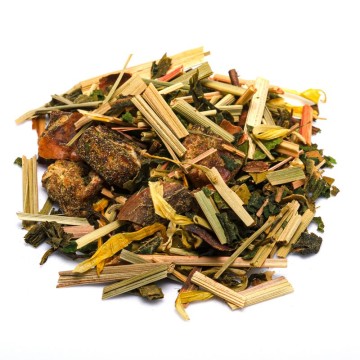A delicious fruity sip, with a fresh flavour, with a rich taste that combines tart tones with sweet ones, in a varied and exquisite way. The sweet and slightly acidic flavor of goji berries is enhanced by other similar ingredients such as hibiscus and apple, up to the acrid lemon which gives an intense and citrus note. Other delicate vegetal and floral aromas, including carrot and safflower, are balanced by the fruity sweetness of pear and peach. A series of unique and dense nuances, which make this infusion a wonderful drink for any circumstance.
Pomegranate peach and goji berry infusion: properties and benefits
Wonderful blend of ingredients, united by a common benefit: they are rich in antioxidants and vitamin C. The infusion therefore becomes a fantastic ally against free radicals and cellular aging, useful for strengthening our natural defenses. The infusion becomes a precious ally for well-being thanks to the properties of Goji berries.
These fruits, highly appreciated for their nutritional value, are energizing and provide elements that improve digestion. They contain a number of minerals and trace elements such as iron, phosphorus and calcium. They stimulate the metabolism and are a good source of vitamins A (beta-carotene) and C, which help strengthen the immune system and the beauty of the skin.
Vitamin C is useful for giving energy and counteracting attacks of tiredness - particularly during the summer.
Several athletes, in fact, use goji berry infusions to maintain energy levels during training and recover faster after physical effort. Beta-carotene is an antioxidant that acts as a primary source of vitamin A, and is abundant in goji berries. Excellent antioxidant, it shows useful qualities for eyesight, skin and bones. The carrot contained in the infusion also provides beta-carotene, and together with the pear it provides group B vitamins and vitamin K via peach. The minerals and vitamins make this drink an excellent gastro-protector, helping the intestinal bacterial flora - whose well-being is useful against irritations of the gastro-digestive system. The mixture contains fruits beneficial for the transit and assimilation of food, such as apple and lemon peel; while peach and goji help with their purifying effect after digestion. Drinking a delicious infusion with peach and Goji berries reduces fatigue, with a regenerating effect.
Origins and history of cultivation
Goji berries are small orange fruits, which grow on bushes of the Lycium chinense shrub and Lycium barbarum, native to Asia. They developed both in the northern (L. barbarum) and southern parts of China (L. chinense). To date, barbatum is favored in cultivation due to its sweet and juicy fruits, given that chinense produces bitterish, smaller and more fragile berries. Goji berries have been consumed in the East since time immemorial, including as traditional Chinese remedies for various ailments.
Considered "fruits of eternal youth" and "precious red gems" due to their wealth of properties, they were used for infusion or as table fruit. In traditional Chinese medicine, the benefits of berries consisted of nourishing and detoxifying the liver and kidneys. This was said to increase vitality. In the West, goji berries were discovered only in the 1970s, quickly becoming a fruit appreciated for its nutritional qualities. Today they are grown in many regions of China and Mongolia, and when ripe, they are harvested into trays or shaken off the plant. They are maintained by drying in full sun on open trays or by dehydrating over two days.
The peach is another fruit native to China, long considered a symbol of longevity and immortality in Chinese mythology. Even today, the holiday remains a popular celebration, and peach is associated with vitality, thanks to the flowers that appear on the trees before the leaves even emerge. They were spread to other continents after the war campaigns of Alexander the Great, who brought peach seeds from Asia and the Middle East to Europe. In fact, the scientific name of the peach is Prunus persica, a reference to Persia. From here they spread to many European countries and then to the American continent, via European colonizers. The success is due to the fact that peach trees are among the few varieties of trees that require a little cold to blossom, excellent nethe cold climates of Europe. Today, the world's largest peach producers include Italy, China and the United States.
Fruits and flowers
The goji berry shrub is dual, deriving from both Lycium chinense and Lycium barbarum. It is part of the Solanaceae family. The plant can reach three meters in height, and flowers from June to September. The berries ripen between August and October, but it takes a few years for the plants to produce berries with an optimal nutrient profile. The peach plant is Prunus persica, of the Rosaceae family.
Peach trees are usually small to medium in size, with shiny green leaves and pink or occasionally white flowers. Peaches usually appear red with yellow shades and various shades, with more or less intense colors in these shades. The apple plant is the Malus domestica of the Rosaceae family. It is a tree native to Asia, now widespread throughout the planet. The fruits vary in color and in many varieties, and have been used in human nutrition for millennia.
Carrots derive from the Daucus carota plant, of the Apiaceae family. It is one of the most common vegetables, the root of which is used in cooking. It shows a green stem and fine leaves, and the typical orange root. The plant is widespread in Europe, Asia and North Africa.
The hibiscus plant is Hibiscus sabdariffa, of the Malvaceae family. It grows in tropical and subtropical regions around the world. The calyx and flowers are used as flavourings, colorants and for the preparation of hibiscus tea. Lemons grow from the evergreen tree Citrus limon, of the Rutaceae family. They grow best in tropical climates characterized by heat and humidity, while they are very sensitive to cold. There are many modern varieties, over 20 different types of lemons grown all over the world.
The safflower plant is theCarthamus tinctorius, a plant belonging to the Asteraceae family. Also known as saffron, since cartamina is extracted from the flowers, with a color similar to that of saffron. The dried yellow-orange flowers are used for infusions and cosmetics. The pear plant is Pyrus communis sativa, of the Rosaceae family. In most species it is a deciduous tree with a wide oval crown, occasionally a shrub. The fruits are variable in size and colour, depending on the variety.
Pomegranate peach and goji berry infusion: side effects and contraindications
To avoid unwanted effects, it is necessary to respect the recommended doses and not exceed the consumption of the infusion for too long periods. Excessive intake can cause diarrhea, nausea, headache, stomach pain and gastrointestinal disorders (flatulence, bloating, etc.). Those who suffer from food allergies are advised to check all the ingredients of the infusion, as some fruits, including peach, can cause itching and swelling of the mouth. Caution advised for pregnant or breastfeeding women.

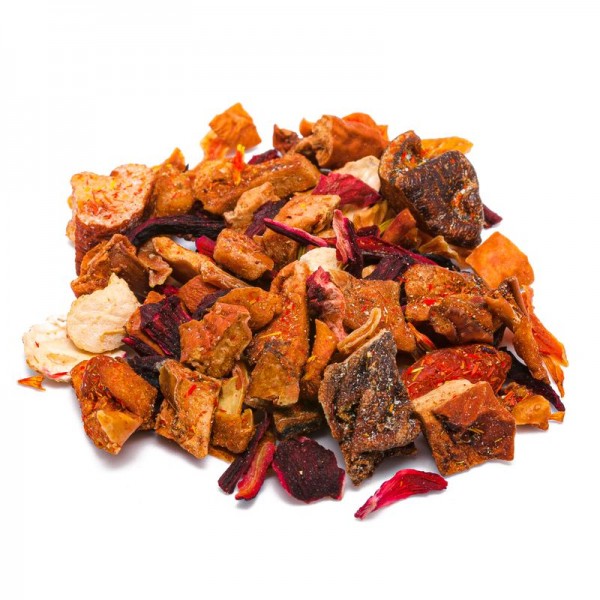







 No reward points for this product.
No reward points for this product.
